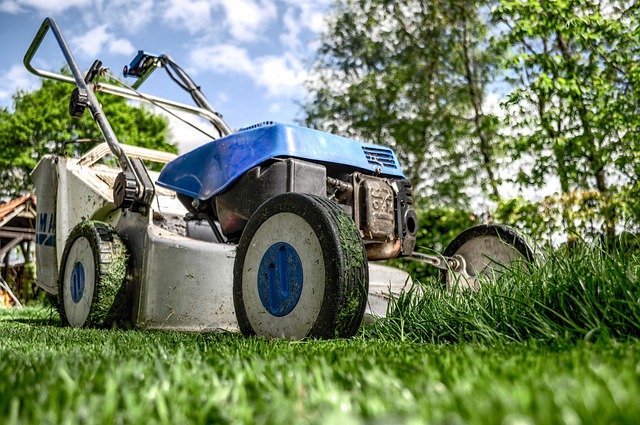Managing Lawn Health Year-Round: Common Techniques Used by Experts
Keeping a healthy, green lawn requires more than regular mowing. From seasonal fertilization and aeration to weed and pest management, professional lawn care services offer tailored treatments designed to support long-term grass health. This guide outlines the core services typically included, how professionals evaluate soil and turf conditions, and what you can expect based on your lawn’s size and region. Learn how consistent care and proven techniques contribute to a lawn that’s both functional and visually appealing.

How Professional Lawn Care Services Work
Professional lawn care services operate through structured programs designed to address specific needs throughout the growing season. These services typically begin with soil testing to determine pH levels, nutrient deficiencies, and composition. Teams then develop customized treatment plans that include scheduled applications of fertilizers, herbicides, and other treatments based on grass type, climate conditions, and property-specific requirements.
Most professional services follow integrated pest management principles, combining preventive measures with targeted treatments. They monitor weather patterns, track seasonal growth cycles, and adjust application timing accordingly. Professional technicians receive training on proper equipment use, chemical handling, and application rates to ensure effective results while minimizing environmental impact.
Benefits of Regular Fertilization and Aeration
Regular fertilization provides essential nutrients that grass needs for healthy growth, root development, and disease resistance. Nitrogen promotes green growth and density, phosphorus supports root development, and potassium enhances stress tolerance and winter hardiness. Professional-grade fertilizers often include slow-release formulations that provide steady nutrition over extended periods.
Aeration addresses soil compaction by creating small holes that allow air, water, and nutrients to penetrate deeper into the root zone. This process is particularly beneficial for high-traffic areas and clay soils that become compacted over time. Core aeration, performed annually or bi-annually, improves water infiltration, reduces runoff, and encourages deeper root growth that helps grass withstand drought conditions.
Seasonal Lawn Treatment Strategies
Spring treatments focus on encouraging growth after winter dormancy. Early spring applications typically include pre-emergent herbicides to prevent crabgrass and other annual weeds from germinating. As temperatures warm, fertilization programs begin with balanced fertilizers that support both root and shoot development. Spring is also ideal for overseeding thin areas and addressing any winter damage.
Summer strategies emphasize stress management and pest control. Treatments may include grub control applications, fungicide treatments for disease prevention, and adjusted watering schedules. Professional services often reduce nitrogen applications during peak summer heat to prevent stress and focus on maintaining soil moisture and managing insect populations.
Fall treatments prepare lawns for winter while promoting root development. This season typically involves the heaviest fertilization of the year, focusing on potassium-rich formulations that enhance cold tolerance. Aeration is commonly performed in fall when cool-season grasses are actively growing. Late fall applications may include winterizer fertilizers that help grass store energy for spring emergence.
Winter care varies by region but often includes equipment maintenance, planning for the following year, and monitoring for issues like snow mold or winter injury. In warmer climates, winter treatments may continue with modified schedules, while northern regions focus on preparation and protection strategies.
| Service Type | Provider | Monthly Cost Range |
|---|---|---|
| Basic Fertilization Program | TruGreen | $50-80 |
| Full Service Lawn Care | Scotts LawnService | $60-100 |
| Organic Lawn Treatment | Local Providers | $70-120 |
| Pest Control Add-on | ChemLawn | $25-45 |
| Aeration Service (Annual) | Various Providers | $75-150 |
Prices, rates, or cost estimates mentioned in this article are based on the latest available information but may change over time. Independent research is advised before making financial decisions.
Proper timing remains crucial for all lawn care treatments. Professional services track degree days, soil temperatures, and seasonal indicators to optimize application timing. For example, pre-emergent herbicides must be applied before soil temperatures reach specific thresholds, while post-emergent treatments require active weed growth for effectiveness.
Equipment calibration and application techniques significantly impact treatment success. Professional services use commercial-grade spreaders and sprayers that ensure even distribution and accurate application rates. They also maintain detailed records of treatments, weather conditions, and results to refine future applications and address any issues that arise.
Understanding grass types and their specific requirements helps professionals tailor treatment programs effectively. Cool-season grasses like fescue and bluegrass have different nutritional needs and growth patterns compared to warm-season varieties like Bermuda and Zoysia. Regional climate variations also influence treatment timing and product selection.
Professional lawn care services provide year-round expertise that addresses seasonal challenges through systematic approaches to fertilization, pest management, and soil health. These techniques, when properly implemented and timed, create the foundation for healthy, resilient lawns that can withstand environmental stresses while maintaining attractive appearance throughout the growing season.




